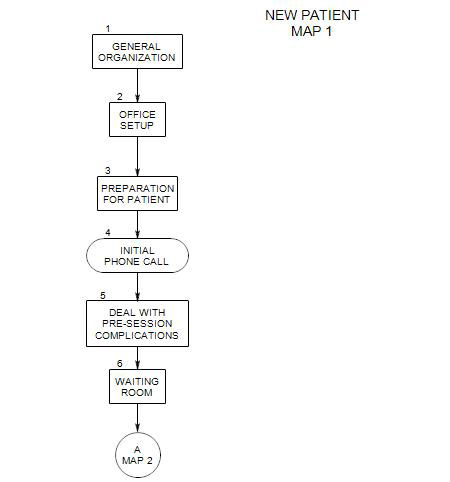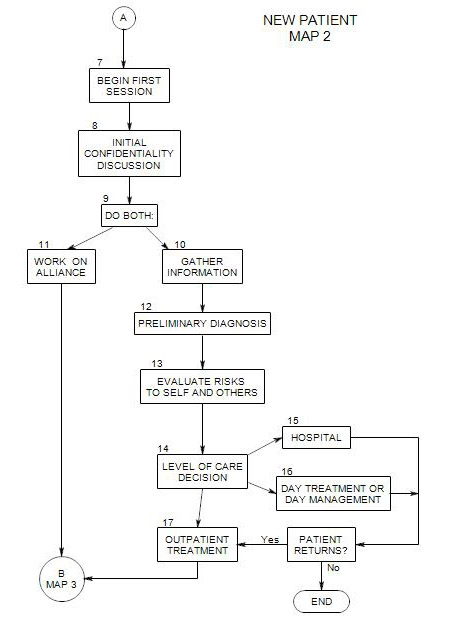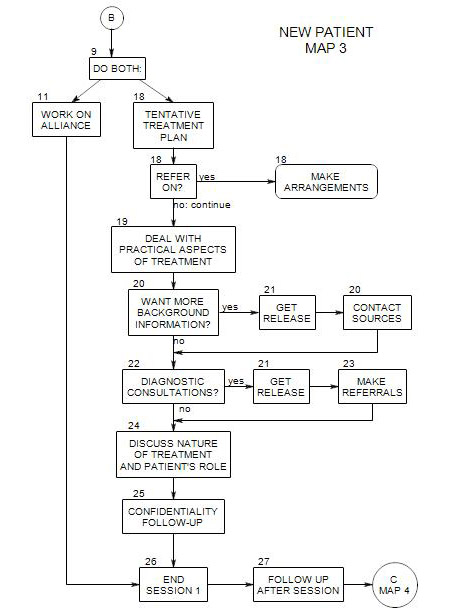-
This appears on Map 3
Refer to Section 3 for HIPAA discussion
People may need to be reminded before the end of the first session about confidentiality issues. If you haven’t already done so, provide a written copy of HIPAA compliance information for them to review if they wish to, and go over the main points. It is especially important to review the different kinds of information [Protected Health Information, personal information and therapy notes] and how they are treated. Loosely put, PHI can be released to third party payers for the purpose of paying for treatment; personal information needs written permission to be exchanged with anyone, and insurers are not automatically entitled to see it; and therapy notes are for your own exclusive use.
If you need to talk to anyone about the patient, be sure that you have written permission, and that it is very specific: whom you may exchange information with, for what purpose, and during what time period.
The primary purpose of this discussion is to reassure your patient that the information he/she provides about his/her thoughts, feelings, actions, etc., cannot be divulged by you.
The exceptions also need noting at this time: essentially, you must try to prevent physical harm from coming to anyone to the extent that you can. If the patient shares suicidal or homicidal intentions with you or plans to do bodily harm to others, you must attempt to dissuade him/her and do anything else you can to prevent him/her from doing it, breaking confidentiality if necessary.



